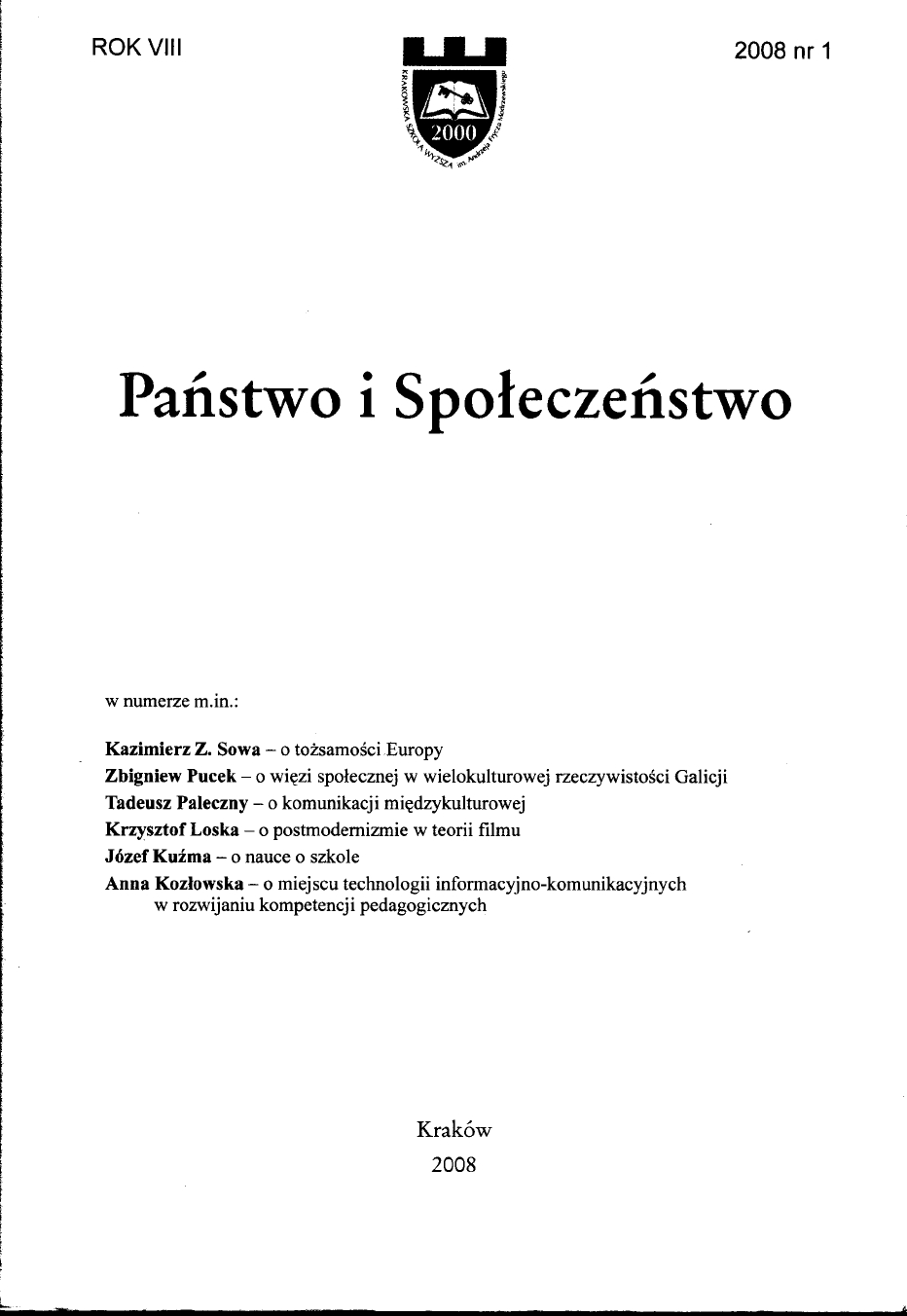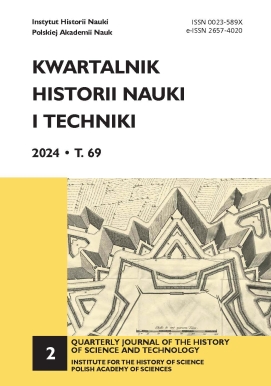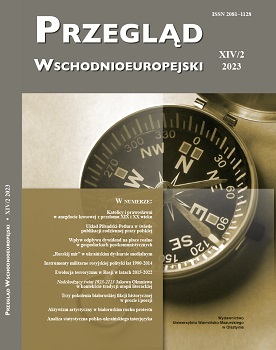
We kindly inform you that, as long as the subject affiliation of our 300.000+ articles is in progress, you might get unsufficient or no results on your third level or second level search. In this case, please broaden your search criteria.




Purpose – This study aims to conduct the validity and reliability study of the "Workplace Violence Scale", which consists of 3 dimensions and 9 items called "Verbal Violence", "Physical Violence", "Sexual Violence", developed for exposure to workplace violence. The related scale allows to evaluate the exposure of employees to workplace violence. In this sense, it is seen that the number of measurement tools that are reliable and valid in our country is limited. Therefore, it is assumed that the adaptation of the workplace violence scale into Turkish will largely meet this need. Design/Method/Approach – In first stage of adaptation which the translation of the scale from its original language to Turkish, the five-step translation method developed by (Beaton et al,,2000). After this stage, the scale translated into Turkish was applied to 303 participants. First of all, linguistic equivalence of the scale was determined., Then, Exploratory Factor Analysis was applied to the scale, and the 3-factor structure in the original scale was tested. In the next step, the construct validity was tested by applying Confirmatory Factor Analysis to the scale. The internal consistency reliability of the scale was determined by applying the Cronbach Alpha test to the scale. Results – As a result of all the processes, the original scale consisting of 3 dimensions and 9 items was adapted into Turkish without any changes. Discussion – As a result of the procedures, it was concluded that the scale can be used as a measurement tool adapted to Turkish as it is used in the article.
More...
The phenomenon of violence, which dates back to the first humans, has a complex structure regarding its individual and social elements. Violence, which we can define as intentional acts that aim to cause personal or collective harm to any living being, has continued throughout history as an action identified with human beings. Psychological violence, which is based on the emotional oppression of the individual, is one of the most common types of violence that we encounter in our daily lives. These elements of violence, which are often unrecognized because they are not visible, like physical violence, have taken on different functions in literary products and have been embodied in various ways. In addition to a wide range of subjects ranging from the daily life of Oghuzs to their struggle against the enemy, the elements of psychological violence have also found a place with different functions in the Dede Korkut Tales, which have an important place in terms of the history of Turkish culture and literature, which dramatically express the Turkish mindset, ideals and weaknesses. In many stories, what happened and what was intended to happen caused differences of opinion between the authority and the people. The people's submission to the authority and choosing the path of agreement ended the unrest, while the opposite situation caused the unrest to turn into conflict and paved the way for the authority to take stricter measures - hence the emergence of acts of violence. In this study, the elements of psychological violence in the narrative of Dirse Han Oğlu Boğaç Han will be analyzed in the context of the effect of the chaos that emerges with the disruption of the existing social order on individuals and the struggle of the heroes against this pressure.
More...
The causes of the civil war in Syria are complex. Both parties involved in fights have internal and external supporters, each of them with different interests. That is why it is difficult to reach a peaceful agreement. The chemical weapons attacks caused a very strong international reaction, including the possibility of military strikes. It is hard to predict the end of the crisis but it is almost certain that the world will look different after the civil war in Syria. Russia and China, for instance, may want to take the lead or to change the world order from a unipolar to a multipolar one.
More...
Introduction: At present in many countries the model of the work of probation officers hasbeen subordinated to the case management method. In the Ministry of Justice started work oncombining the resocialization treatment by probation officers with the assessment of recidivismrisk in convicts classified into three groups of recidivism. In this manner, the probation meth-odology can shift from educational purposes to prevention and control. The principal goal ofthe proposed solutions was to turn probation officers into a professional service responsible forthe protection of society and probationers themselves against next criminal acts.Research Aim: This is a review article. Its purpose to present the course of the reform of guard-ianship for adults after the political transformation.Evidence-based Facts: While preparing new solutions did not pay sufficient attention to themoment of implementation of the proposed recidivism risk management model into the prac-tice of conducting probation supervisions, grading of control and adjustment of resocializationprograms to different risk groups. The unprofessional implementation of the recidivism riskmanagement model may result in the mass exclusion of the convicted persons from resocializa-tion in an open environment.Summary: The probation officers were not prepared to recognize the criminogenic needs ofthe probationers. When formulating forecast, they use a very limited list of predictors of thefuture criminal behaviour of the probationers. This means that the probation officers must beequipped with appropriate, reliable, proven and structured recidivism risk estimation tools.
More...
The author reviews the evolution of al-Qaeda, especially over recent years, writing that over the 24 years since the formation of al-Qaeda, four phases can be distinguished. Each helps us in different ways to understand the nature of the threat from radical Sunni Islamic extremism today, particularly when it comes to so-called homegrown terrorism. By 2003 or 2004, new security arrangements made it impossible to insert large groups of foreign operatives in target countries. The vanguard was replaced by the “network of networks”. For several years, there have been an increasing number of so-called “lone wolf” attackers, inspired by but in no way linked to al-Qaeda. Significant though the death of bin Laden himself was, analysts largely agree that the al-Qaeda core leadership had been getting weaker for some time before the death of their leader.
More...
Regardless of the approach – individual, national, regional or international, security is a normal state of peace required for the successful performance of activities, development and progress. Security is a fundamental human right, for personal and professional development; it is not wrong if we add to this a sense of wellbeing, comfort and lack of fear of tomorrow that each individual needs. The current security environment, expressed through nature, quality and size of the relationships that develop in various areas (political, diplomatic, economic, military, social, environmental, legal, information), is changing, because of the fluid and unpredictable threats that appear. The effects of these threats have an impact on the individual. Violence, in any of its forms of manifestation, and traffic accidents are, in our view, serious threats to human security.
More...
In the second part of the article, the author deals with the issue of war in opposition to peace from the perspective of the second most important school in the theory of international relations – liberalism, noting that those who advocate this trend have avoided considering war as a means to regulate the issues between states that are liberal democracies. Then, he approaches the same issue from the standpoint of the sociological school, mentioning that, in the context of the development of social-humanistic sciences, sociological explanations have gained more and more importance. In the end of this part, the author writes about the Romanian contribution to the issue of peace and war, pointing out the work of Dimitrie Gusti, more precisely two of his excellent studies on war sociology.
More...
The persistence of armed conflicts in the history of the humankind has been an evil, to some extent, necessary to the human being and the world on their way to progress. In this case, the evil is the war with all its bad consequences and the good is peace and international law applicable in armed conflicts. In the author’s opinion, it is not at all true what Cicero said that laws must be silent when weapons speak, because war is not a simple fight for existence and survival, but remains, in its essence, a human action. That is why the possibility of legal regulation of armed conflict situations arises from the ancient principle of “ubi societas ibi jus” so that, being an action decided and carried out by the members of an organised human society, the armed conflict has also available a legal reflection through which the rights and duties of belligerents are established.
More...
Romania provides a legislative framework to respond to the real need for protection anddefence of children who become victims of abuse in various environments, such as family,foster/residential homes, school or community, yet local authorities do not react uniformly or react late to defend children. An analysis carried out at national level on how the General Directorates of Social Assistance and Child Protection (GDSACP) manage the 119 – Child helpline service. At the same time, we studied the reaction of children, victims and adults who have reported an incident, trusting the 119 helpline. At the same time, we tried to highlight the support offered, by a public institution, to Romanian minors who called the child helpline as victims of abuse.
More...
This article analyses the new Law on Protection from Domestic Violence, which entered into force on 1 July 2023, and established emergency barring orders in Lithuania. The article discusses why there was a need for a new protection institute and analyses similar existing institutes in international law. The analysis relies on the practice of the European Court of Human Rights and the United Nations Committee on the Elimination of Discrimination against Women, taking into account the Council of Europe Convention on preventing and combating violence against women and domestic violence and the Proposal for a directive of the European Parliament and of the Council on combating violence against women and domestic violence. The article also critically reviews the decision-making algorithm behind issuing (or not issuing) an emergency barring order and discusses the emerging practice of national courts in cases where the decision to issue (or not to issue) an emergency barring order is appealed.
More...
The need to know as many details as possible regarding terrorists’ psychological, physical and specialised training that is generated by terrorist groups’ intention of brain washing the new recruits and religiously indoctrinating based on models inspired by The Big Encyclopaedia of Jihad, The letter from an al-Qaeda member and How to withstand and to confront special services’ investigators requires now, more than ever, a special focus on understanding terrorist groups re-configuration and a new approach to antiterrorist fighters’ training. Al-Qaeda (“Qaidat al-Jihad”), after merging, in June 2001, with al-Jihad (the Egyptian Islamic Jihad), holds training bases spread over the South, South-East Asia and Middle East. Beside these bases, it is a well-known fact that the terrorist group is very active through its European cells called White al-Qaeda or “the terrorists with white skin”. This group reunites around 800 Bosnian Mujaheddin and its purpose is to expand al-Qaeda in Europe with the final aim of accomplishing the “Pan-Islamic Caliphate” worldwide.
More...
The results of research projects to understand the diversity of the human genome have opened up new avenues of biomedical research and provided new tools for human identification studies. Genome wide association studies and epigenome wide association studies have enabled the identification of DNA markers that have been implemented and validated as predictive tools in the field of forensic DNA phenotyping. In the age of genomics, the study of biological traces can reveal the biogeographical ancestry, physical appearance, age and lifestyle of the perpetrator. The combination of different methods, including forensic genetic genealogy and prediction of phenotypic features, offers the possibility of significantly narrowing down the pool of suspects, thereby significantly improving the process of solving criminal cases. In general, a limitation is the availability of effective methods for large-scale DNA analysis that would ensure the forensic level sensitivity of the test.
More...
This paper provides a new analytical perspective on the socio-cultural interactions involving members of two main Italian research communities – the School of Mathematical Logic and the Italian School of Algebraic Geometry – and some of their Polish colleagues (Samuel Dickstein, Wiesław Jezierski, Alfred Rosenblatt et al.). I shall argue that the intricate network of relationships between Giuseppe Peano, Corrado Segre and their protégés paved the way for an intensification of scientific exchanges between Italy and Poland in the 1930s. The climax manifested in visits by Tullio Levi-Civita and Mauro Picone to Warsaw and Krakow. Simultaneously, this network fostered instances of remarkable cross-solidarity when Polish and Italian mathematicians faced a period of severe anti-Semitic persecution and migration. An appendix containing unpublished letters documents Rosenblatt’s role in assisting aspiring Italian refugees in securing positions in Peru.
More...
The author approaches the concept of strategic paralysis from the perspective of its military, spiritual, material, mental and moral features. The main purpose of this concept is the incapacity rather than the annihilation of the enemy. In this respect, the author underlines that this option is intended for acquiring maximum political benefits with minimum material and human expenses. The planned actions are aimed at neutralising the enemy’s will to fight through actions carried against the capabilities that provide the resource and command-coordination elements needed for conducting the war. The main purpose of a direct action is to affect the enemy physical, material and mental capabilities, the enemy morale included.
More...
This study conducts a framing analysis of how Spanish journalism represents “Gypsy identity” within the markers of generousness and criminality (in the period from 2010 to 2018). The paper aims to validate the following underpinning hypothesis: as symbolic and epistemic violence, antigypsyism legitimizes systemicracial discrimination and exclusion against Roma in Spain.The article is organized into five sections. First, an analytical framework introduces the notions of “antigypsyism,” “structural discrimination,” “social fear,” “symbolic violence,” “epistemic violence,” and “framing analysis.” Second, a case study is presented on a sample of 150 national news reports that portray Romani characters in a biased way. Third, this analysis informs an ethical and legal debate that challenges the limits of free speech and the uses of discriminatory and biased language in informative narratives. Thefourth section examines and provides conclusions regarding the correlation between structural discrimination against Roma andthe role of media in engendering the stigma of the “Gypsy threat.”Finally, the article includes a series of recommendations that could be used to counteract racism in news narratives.
More...
Legal-political changes in the Russian Federation during the first presidency of Vladimir Putin, covering the years 2000-2008, are the subject of the article. The study first focuses on the strengthening of executive power, both at the central and regional levels, consolidating the power camp and shaping the political system of the state. In the period under analysis, the powers of the President of the Russian Federation were increased, the Federation Council was weakened, control over the regions was strengthened, and a number of rights and freedoms of citizens were limited. In his actions, Putin relied on the power ministries and secured the loyalty of the State Duma and the oligarchs. The United Russia party became his political base. Putin’s political opponents and competitors were ruthlessly eliminated from political life. An analysis of the features of the political system of the Russian Federation indicates that it had become an authoritarian state.
More...
This reflection will focus on a corpus of testimonies collected in Metz a few months after the terrorist attacks on November 13, 2015 in France. We will discuss how the media narratives of these attacks build an internalized representation of a national event among speakers who live 350 km away from the site of these attacks. It emerges a balance between cohesive momentum and local withdrawal, in particular through the involvement and the emotion of citizens. We will show that the distance Lorraine/Paris and its suburbs appears in a polarizing or unifying apprehension. Through the prism of the media consulted, an articulation occurs between projective collective identities and frozen identities of the past.
More...